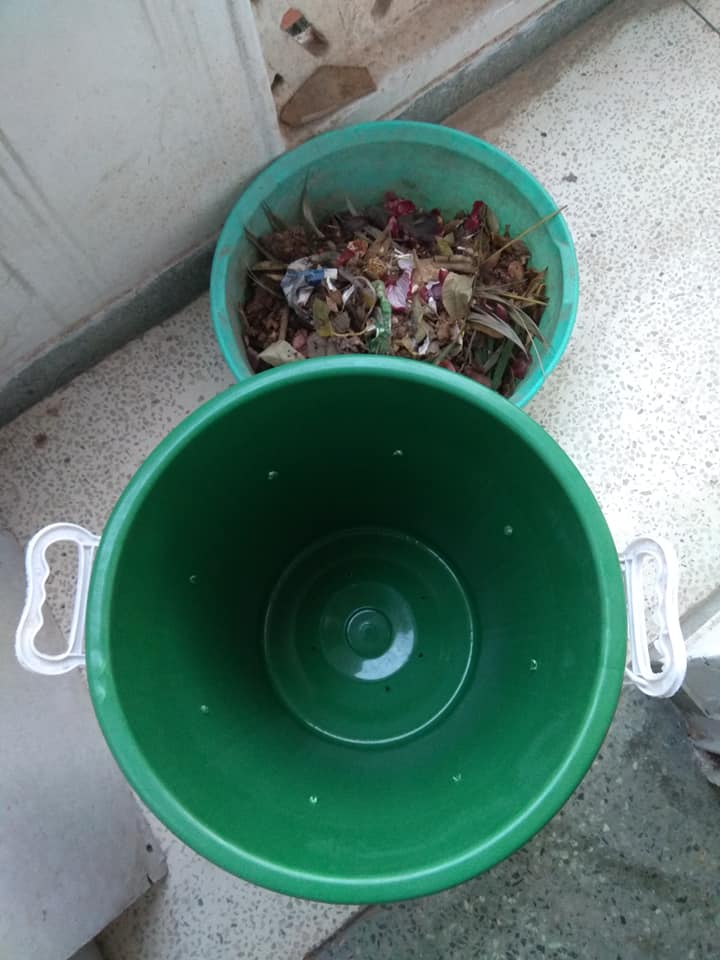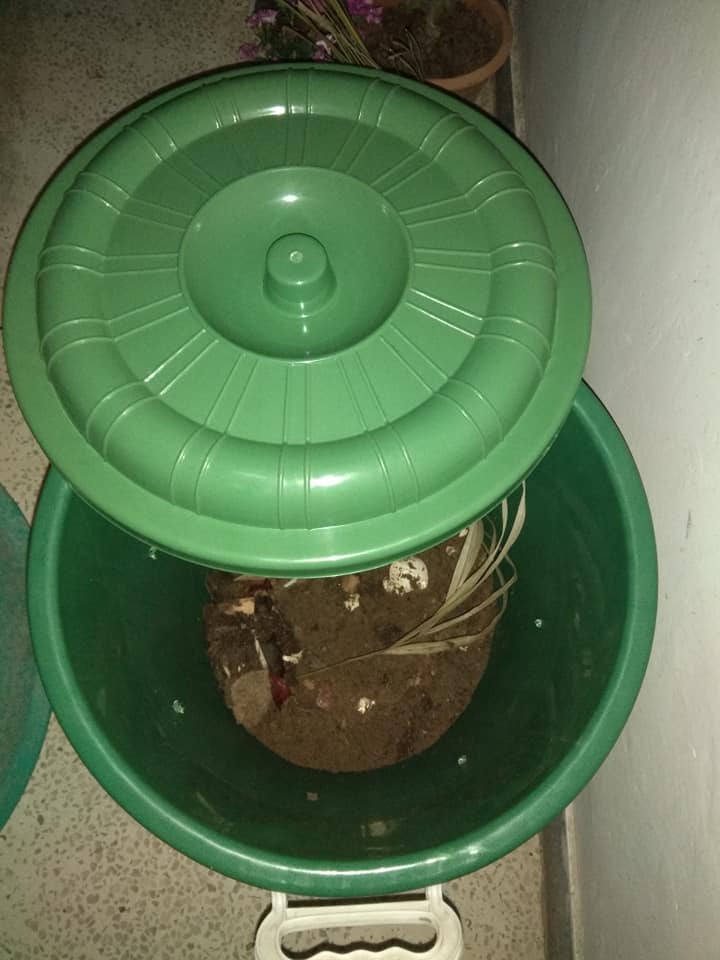1. Choose Your Type of Backyard Compost Bin.
You can use either an open pile or a compost bin. Bins have the advantage of being neat, keeping animals, flies out and preserving heat. You can purchase compost bins from a variety of garden and home stores, or you can build your own compost bin (Take any plastic bucket with a lid or a mud vessel with lid in which you can create holes at bottom and sides).The size and type of bin you purchase or build will depend on how much compostable material you generate.
2. Choose Your Composter Location.
You should choose a location which is flat, well-drained and sunny. Most importantly you should find a convenient location. Keeping the vessel in Sunlight abundant area is the best.
3. Alternate Layers.
Start with a layer of course materials (like twigs) to allow for drainage and aeration. Cover this layer with leaves. Then simply alternate between layers of greens materials (nitrogen-rich material) and browns (carbon-rich material).
| Browns | Greens | Don’t Compost |
| Evergreen needles | Green leaves | Invasive weeds gone to see |
| Dried leaves | Garden waste | Meat/fish/bones |
| Paper egg cartons | Flowers | Fat/oil/grease |
| Paper towels/napkins | Vegetables | Dairy products |
| Dried grass clippings | Fruit peels | Cooked foods (attracts animals) |
| Shredded newsprint | Scraps | Pet waste |
| Bark | Coffee grounds | Plastics |
| Coffee filters | Tea leaves/bags | Metals |
| Straw | Egg shells | Glass |
| Sawdust (limited amt.) | Flowers | Toxic material |
| Dryer/vacuum lint | Charcoal | |
| Cardboard (cut into small pieces) | Chemical logs | |
| Dead house plants | ||
| Shredded brown paper bags |
4. Add Kitchen and Yard Waste as They Accumulate.
Collect your kitchen compostables in a container in your kitchen. Find a handy place to store this container container – on the counter, under the sink or in the freezer. When it is full, empty its contents into the compost bin.
Whenever you add food scraps or yard waste, be sure to top it with a layer of browns. If you do not add browns, your compost will be wet and break down more slowly. If possible, collect and store dry leaves in an old garbage in the fall so you can use them in your compost year round.
5. Continue to Add Layers Until Your Bin is Full.
The bin contents/pile will shrink as it begins to decompose.
6. Maintain Your Compost Bin.
To get finished compost more quickly, check your compost bin and make sure the following conditions are met:
- When you add fresh material, be sure to mix it in with the lower layers.
- Materials should be as wet as a rung-out sponge. Add dry materials or water – whichever is needed – to reach this moisture level.
- Mix or turn the compost once a week to help the breakdown process and eliminate odour.
7. Harvest Your Compost.
Finished compost will be dark, crumbly and smell like earth. You should be able to have finished compost within four to six months of starting your bin.
The finished compost will end up at the top of the bin or compost pile. Remove all the finished compost from the bin, leaving unfinished materials in the bin to continue decomposing. Be sure the decomposition process is complete before you use your compost; otherwise, microbes in the compost could take nitrogen from the soil and harm plant growth.

Container with holes created 
Filled container
Use Your Compost!
- Sprinkle your lawn a few times a year.
- Use your compost as top dressing for flower beds and at the base of trees and shrubs.
- Mix compost in with garden and flower bed soil.
- Use as a soil conditioner when planting or transplanting trees, flowers and shrubs by filling the hole with half compost and half soil.
Hope this is helpful.
Shruti






